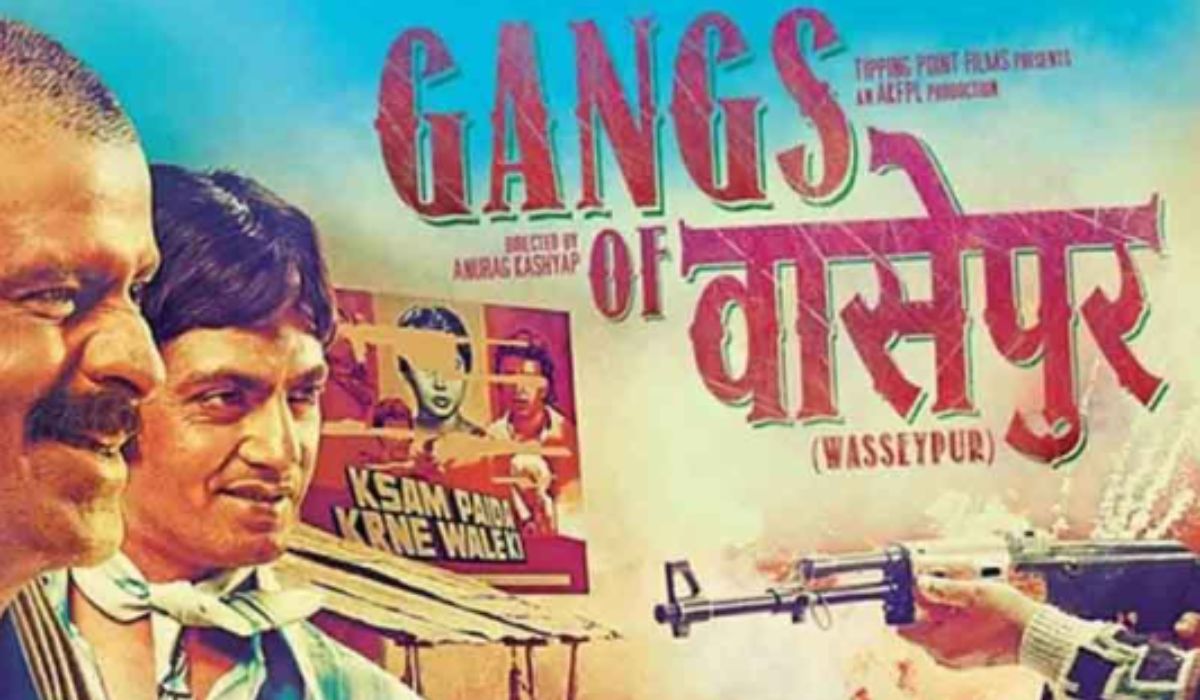The Epic Saga of Revenge: Gangs of Wasseypur
- February 21, 2025
- 0
The Indian film industry has produced many crime dramas, but few have made as profound an impact as Gangs of Wasseypur. Directed by Anurag Kashyap, this epic saga
The Indian film industry has produced many crime dramas, but few have made as profound an impact as Gangs of Wasseypur. Directed by Anurag Kashyap, this epic saga

The Indian film industry has produced many crime dramas, but few have made as profound an impact as Gangs of Wasseypur. Directed by Anurag Kashyap, this epic saga of power, betrayal, and vengeance transcends cinema—it is a raw and gripping portrayal of crime and politics in India. Set in the coal-rich town of Wasseypur, the story spans three generations, tracing a blood feud that begins with a single act of betrayal and evolves into an unrelenting cycle of violence.

To begin with, the conflict arises in pre-independence India when Shahid Khan impersonates the infamous dacoit Sultana Daku to loot British trains. However, his actions anger Sultan Qureshi, the reigning coal mafia leader, who consequently banishes Shahid from Wasseypur. This single act of expulsion sows the seeds of vengeance in Shahid’s heart, setting the stage for decades of bloodshed.

As a result, Shahid Khan is forced to rebuild his life in Dhanbad, where he starts working under the corrupt and ambitious politician Ramadhir Singh, who controls the coal mafia. Over time, Shahid’s influence grows, making Singh see him as a threat. Therefore, Singh orchestrates Shahid’s assassination. This brutal betrayal fuels the fury of Shahid’s son, Sardar Khan, who subsequently vows to avenge his father’s murder and reclaim his family’s lost honor.
Sardar Khan emerges as a formidable and ruthless leader, determined to bring down Ramadhir Singh and take control of Wasseypur. Unlike his father, Sardar is not content with survival—rather, he craves absolute power. Consequently, he builds a strong network of allies and enforcers, challenging Singh’s dominance over the coal trade and illegal activities in the region.
Nevertheless, despite his strategic brilliance, Sardar Khan is deeply flawed. His uncontrollable desire for women, particularly his second wife, Durga, creates internal family tensions. Meanwhile, his first wife, Nagma, remains strong and pragmatic, tolerating his indiscretions for the sake of survival and their children’s future.
Also Read: Sita Ramam: A Tale of Love, Separation, and Unwavering Devotion
As expected, Sardar Khan’s growing power triggers a violent retaliation from Sultan Qureshi and Ramadhir Singh, leading to an all-out gang war. Consequently, Wasseypur’s streets are painted with blood as multiple factions battle for supremacy. Eventually, Sardar is assassinated in broad daylight by Sultan Qureshi’s men, leaving his sons, Faizal and Danish, to carry forward his vendetta.
Unlike his father and grandfather, Faizal Khan initially shuns the path of violence. Instead, he prefers a quiet life, spending his days watching films and smoking marijuana. However, when his elder brother Danish is murdered, Faizal is forced into the world of crime.

His transformation from an indifferent bystander to a ruthless kingpin is, without a doubt, one of the most compelling arcs in Gangs of Wasseypur. Over time, Faizal systematically eliminates his rivals with cold precision, dismantling Ramadhir Singh’s empire piece by piece. Ultimately, his final confrontation with Singh is poetic yet inevitable—he avenges his family, but in doing so, he perpetuates the cycle of violence that consumed his predecessors.
What makes Gangs of Wasseypur a masterpiece is its raw and realistic portrayal of crime, politics, and the human cost of revenge. Unlike many other crime films, this one does not glorify violence; instead, it showcases how power struggles and blood feuds destroy generations. Additionally, the storytelling is intricate, featuring deeply flawed yet unforgettable characters. The film’s dialogues, filled with dark humor and raw intensity, have become legendary in Indian cinema.
Beyond its compelling narrative, Gangs of Wasseypur also offers a powerful commentary on the socio-political landscape of small-town India. Specifically, the coal mafia, caste conflicts, and corrupt politicians highlight the harsh realities of lawlessness in these regions.
In conclusion, Gangs of Wasseypur is not just about gang wars—it’s a generational saga that delves into themes of revenge, power, and destiny. It illustrates how violence begets more violence and how, in the ruthless pursuit of power, even the victors suffer immense personal losses. With its gripping storytelling, unforgettable characters, and brutal realism, Gangs of Wasseypur stands as a landmark in Indian cinema.